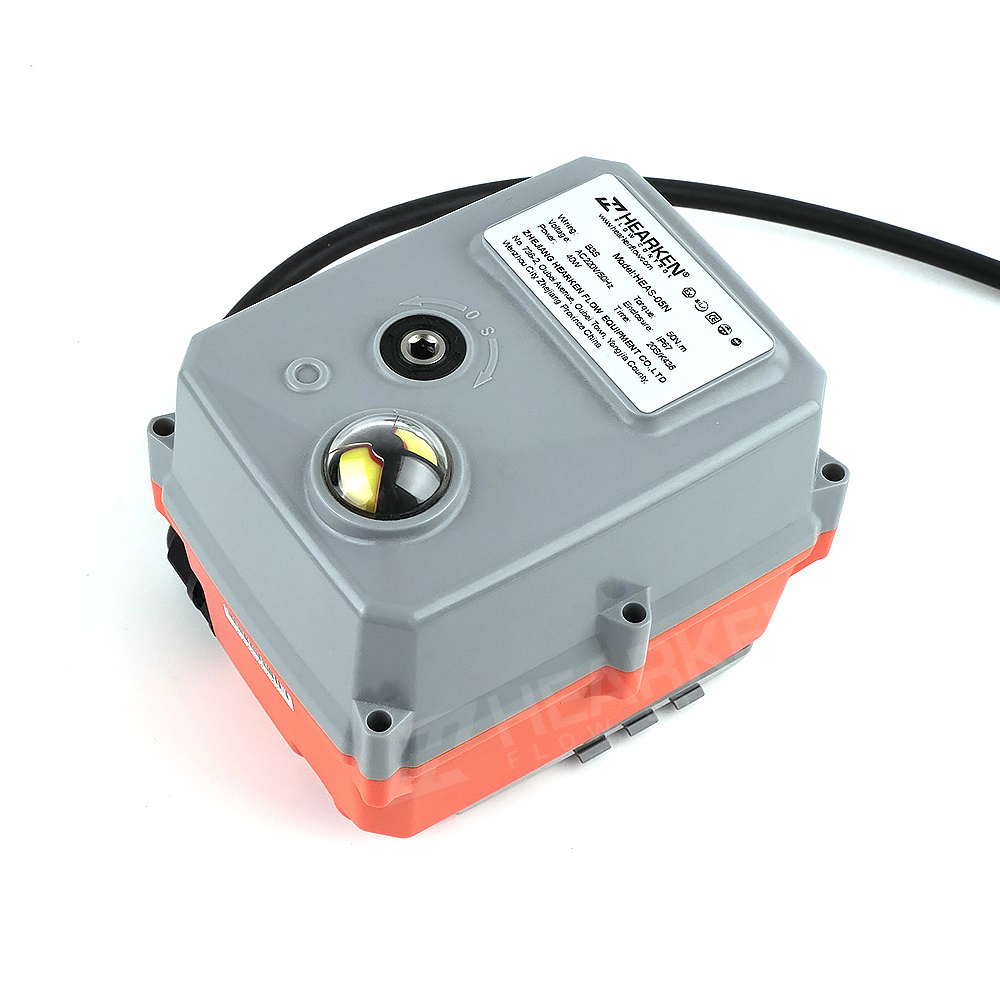Electric Actuator
HEA(A) Electric Rotary Actuators Manufacturer
HEA(A) Series is a compact industrial duty quarter turn electric actuator specifically d
HEAS Series 2-Way Mini Motorized Ball Valve
HEAS Series 2-Way Mini Motorized Ball Valve can be used to regularly cycle to the draina
Electric Actuator Modulating 4~20mA
HEA Series Quarter-Turn Electric Actuator is used for controlling 0~270 degree Rotation
Rotary Electric Actuator
HEAS-N series quarter turn electric actuator is constructed with internal mechanical cam
Multi-Turn Electric Actuator
The multi-turn small electric valve actuator is a new product extended from the small-di
Industrial Linear Actuators in Automated Manufacturing
Industrial linear actuators play a pivotal role in automated manufacturing processes, offering precision, efficiency, and reliability. These devices are designed to convert energy (often electrical) into linear motion. They're integral in machinery for tasks that require movement, such as pushing, pulling, lifting, and positioning, with applications across various industries including automotive, electronics, packaging, and more.
Definition of Electric Cylinder Actuator
An electric cylinder actuator, also known as an electromechanical cylinder, is a mechanical device designed to convert electrical energy into linear motion. It operates on the principle of electromechanical conversion, utilizing an electric motor to drive a screw or lead mechanism, which in turn moves a piston or rod in a linear direction. This type of actuator is a critical component in various industrial, commercial, and consumer applications where precise, controlled linear movement is required.
Difference: electric cylinders and pneumatic cylinders
Electric cylinders and pneumatic cylinders are both used to generate linear motion in various applications, but they differ significantly in their operating principles and typical use cases.
Electric cylinders operate by converting electrical energy into mechanical motion through the use of an electric motor that drives a screw mechanism, allowing for precise control over position, speed, and force. They are highly efficient, offer precise motion control, and are suitable for applications requiring exact positioning and repeatability. Electric cylinders are preferred in environments where precise control and flexibility are necessary, and they are often used in automation, robotics, and precision assembly applications.
Pneumatic cylinders, on the other hand, use compressed air to move a piston within a cylindrical chamber, creating linear motion. They are simpler in design and operation, offering high force at a low cost, and are capable of rapid movements. Pneumatic cylinders are less precise than electric cylinders and are typically used in applications where speed and force are more critical than precise positioning, such as in material handling, packaging, and manufacturing processes where simple on/off motion is required.
Application areas for electric cylinders
- Automation and Robotics: For precise movement and positioning of parts and tools in manufacturing lines.
- Medical Devices: In applications requiring precise and controlled motion, such as in surgical instruments and diagnostic equipment.
- Consumer Electronics: In devices where compact and precise movement is essential, such as in cameras and smart home devices.
- Automotive Industry: In manufacturing processes, as well as in vehicle components requiring linear motion, like adjustable seats and windows.
How much weight can heavy duty linear actuators hold?
The weight capacity of heavy-duty linear actuators can vary significantly based on their design, size, and the specific technology they employ (e.g., electric, hydraulic, or pneumatic). Generally, heavy-duty linear actuators are engineered to handle loads from a few hundred pounds to several tons.
Which type of actuators is more suitable for heavy load lifting?
For heavy load lifting, hydraulic actuators are typically the most suitable choice due to their high power density and ability to generate large amounts of force from relatively small packages. Hydraulic actuators operate by using fluid pressure to move a piston in a cylinder, which allows them to exert significant force, making them ideal for applications involving heavy loads.
Can linear actuators be synchronized?
Yes, linear actuators can be synchronized to operate in unison, which is a common requirement in applications where multiple actuators need to work together to perform a task smoothly and efficiently. Synchronizing linear actuators ensures that they extend and retract at the same rate and to the same position, which is crucial in applications involving precise movements and loads distribution, such as in adjustable platforms, lifting mechanisms, and automated machinery.
Are linear actuator limit switches pre-set?
Linear actuator limit switches can be either pre-set by the manufacturer or adjustable, allowing users to set or change the limits based on their specific application needs. The type of limit switch configuration depends on the actuator model and its intended use.





